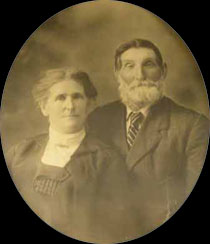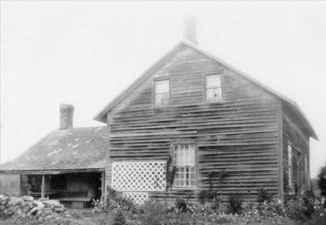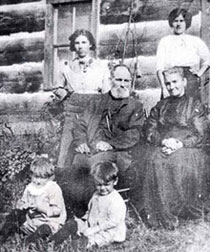The Woodrow Homestead which sits on 6.5 acres of parkland, was purchased in August 1966 by Coldwater Canadiana, a not-for-profit corporation, organized to preserve local history. The log home is an excellent example of the workmanship of our pioneer forefathers. The oldest part of the house is the back room with its stone fireplace, built in the early 1830’s. The stone fireplace, with its hand forged crane and unique hand carved mantle provided all the heat and the cooking facilities in the house. The skillet hanging by the fireplace was originally used here. At one time there was an open loft above this room. As this was the entire house at the time, it served as kitchen, living area and bedroom.
With the addition of nine more children to the Woodrow household, in 1864 the two-story front on the house was built. Here on the main floor you will find our central display room and fireplace room which features exhibits and artifacts from the Coldwater area. Upstairs you will find where the Woodrow’s slept in four bedrooms. Currently, there are three rooms set up as a family bedroom, a sewing room and a doctor’s room (though no Woodrow family members were practicing doctors).

The homesteaders, Archibald Woodrow, his wife Catherine and daughter Catherine, came by sailing ship from the Island of Islay, Scotland. The rest of their family, five sons and four more daughters, were born and raised in this house. Catherine (the daughter) eloped with George Borland. She climbed through a loft window near the fireplace and he was waiting at the river in his canoe. Sandy married and served on Medonte Council. Bill, Jim and Neil, all bachelors, stayed on here after their parents died. The other son and the daughters all married and today many residents of the area trace their ancestry back to this homestead.

Late in 1966, money was borrowed to purchase the Woodrow Homestead which is situated on an old stage coach route now called Woodrow Road. In the spring of 1967 restoration of the log house began. The objective was to restore this charming place as a museum to honour the pioneer families of the district as well as developing cultural centres of arts and crafts. Many volunteers contributed time, supplies or money to support this goal. In 1979, the Woodrow Homestead was finally recognized as a Heritage Property and Ontario’s newest museum and eventually became known as the Coldwater Canadiana Heritage Museum.
Since then, the Museum has added a number of historic buildings. All outer buildings, with the exception of the Fire Hall, Washrooms, Dry Boat House and Implement Pole Barn were brought to the site from neighboring farms. These buildings feature historic exhibits from the village of Coldwater and area.
The Homestead has been on the same foundation from when it was constructed. The house is important to the community, as it is a unique example of how many of our ancestors carved a life in the wilderness in early Canada.
